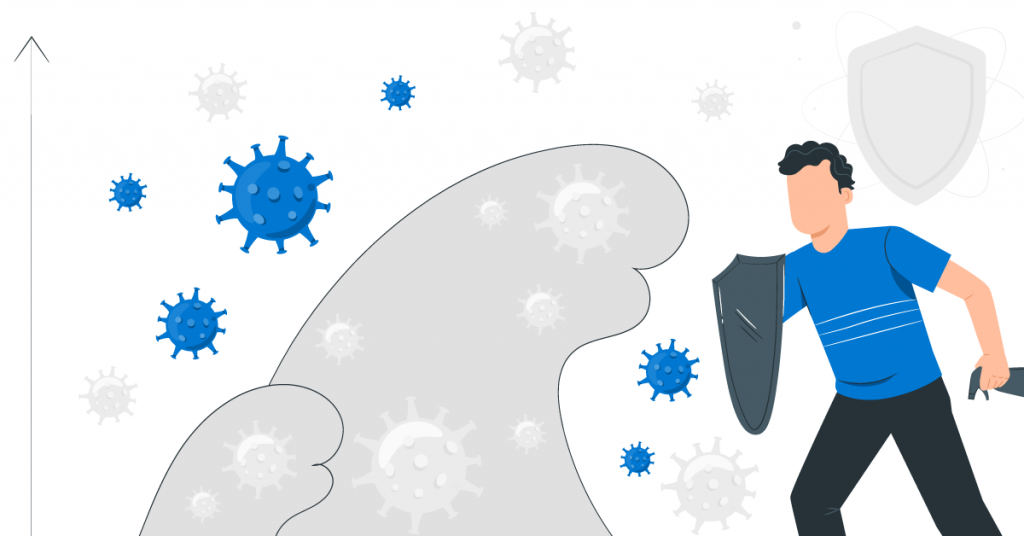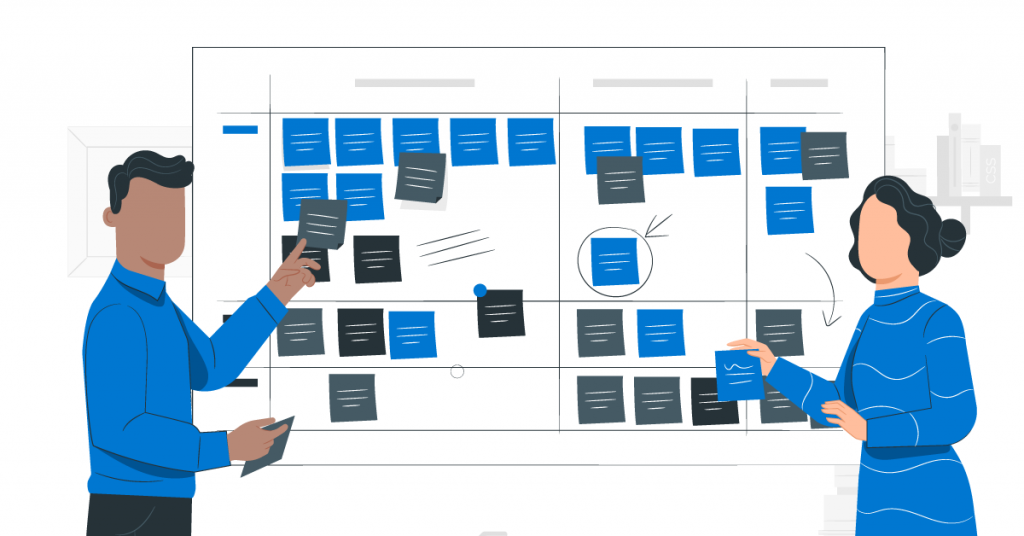The effects of a disaster can be devastating to a business. Typhoons, floods, or even the COVID-19 pandemic have, throughout history, shut down many businesses. And most businesses that do not have a business plan for continuity close for good.
A business that has survived one disaster may not survive another. In September last year, Yelp reported a total of 163,735 business closures in the US, with around 60% of them (estimated at 97,966 as of August 31) permanently closing. Around the same month, the Philippines reported that around 90,000 businesses in the country remain closed.
Most big companies prepare continuity plans to survive disasters.
But what does it mean to “disaster-proof” your business?


Business continuity planning (BCP) is the process of creating a system that helps a business prevent and recover from potential threats that may emerge in the environment it is situated in.
Its end goal is to protect the business’s employees and assets during a disaster and ensure that the business can quickly adapt to the effects of a disaster.
According to statistics, 40-60% of small businesses permanently close after experiencing a disaster. And among those that are closed for at least five days, 90% fail within a year.
It is imperative, then, for businesses to improve their resilience during pandemics, typhoons, or floods — and to continue operating during these times since business closure could result in a negative cash flow (i.e. the business is still incurring expenses, like rent, storage, and utilities, without getting sales).
What a business continuity plan does is mitigate the risks of these disasters and cushion the impacts of business uncertainties so that the business remains profitable— or at least losing less— regardless of the environment.
Top threats to businesses


The usual threats to businesses are the following:
Global Pandemics
There’s a reason why the world-renowned billionaire Bill Gates has been involved in preventing the spread of dangerous contagious diseases for more than 20 years. Global pandemics can cause an economic slump which may take years or even decades to repair, affecting millions of businesses and livelihoods worldwide.
Gates predicted that “we could easily get to $10, maybe $15 trillion [in economic loss] over the next two years.” He also noted the pandemic’s effects: changes to work habits, the closures of businesses and schools, and mental health issues caused by confinement.
Natural Disasters
Floods, typhoons, earthquakes, volcanic eruptions, and other natural disasters are difficult to predict and can cause a total halt of business operations. They can also damage physical structures related to businesses and other infrastructure that are essential in a business supply chain.
Disruptions caused by natural disasters can prevent the distribution of products and services to customers and may tremendously affect the sales and overall survivability of a business.
Outages
Outages in power, internet, water, and other utilities can significantly affect the way a business can engage its customers — which may result in its temporary, if not permanent, closure.
Utility outages can cause losses in sales during the outage and may even hurt the image of the business which could discourage potential and future customers from buying (again).
Cyber Attacks
Cyber attacks are one of the most common modern threats to businesses. According to studies, a single cyber-attack could cost your business $38,000 per attack.
Preparing for the “second wave” of COVID-19


Despite the news of vaccines being finalized and distributed in several countries, a second wave of infection is predicted— a spike in the number of coronavirus cases as communities relax their restrictions and begin to reopen bars, restaurants, and stores.
According to studies on previous pandemics, the second wave of infection is usually characterized as deadlier and will affect more people than the “first wave” — the first few months of recorded infections after a pandemic hits.
Today, the predicted second wave of COVID-19 “won’t be any gentler” and many businesses are predicted to suffer, unable to rebound.
So now is the time to disaster-proof your business.
Six steps to create a business continuity plan
Here are six steps that you can do for your business to survive another disaster:
1. Identify your business continuity objectives and goals


It may sound cliché but answering the question “What do you really want to achieve at the end of the day?” is the most important part of business continuity planning.
It helps you determine the next steps that you will take in the short-run (objectives) and in the long-run (goals).
It can also help you adopt the appropriate strategic approach during a disaster such as “to strive to be a low-cost provider” or “to focus on a narrow market niche.”
The goals of a disaster plan may include the following:
- Employee safety
- Asset security
- Operational resilience
These goals may serve as the foundations of the succeeding steps.
2. Identify the “threats” to protect your business from and develop a plan
There are several threats that you may want to protect your business from, such as:
- A global pandemic
- A contagion
- Weather-related disasters
- Earthquakes
- Wildfires
- Cyberattacks
Develop a plan to respond to these threats and minimize their damage. This can include having a “designated team” that will be responsible for assessing the impact of the damage and monitoring the organizational response in terms of minimizing the damage. Or in general, someone who will conduct risk assessment and business impact analysis (BIA).
Your plan should include an adjustment in the following key business areas:
- Sales and Marketing
- Finances
- Workforce
- Customer Support
These adjustments will be necessary so that the business can respond to the challenges of the market when it comes to logistics, change in consumer behavior, and etc.
3. Train your staff to implement the plan
All plans, including business continuity, require some degree of staff training to ensure a smooth transition during a disaster.
Every employee has a role to play in helping the organization achieve the goals of its disaster plan. Make sure this is properly communicated to the employee before any disaster strikes.
Training, seminars, and workshops should be conducted from time-to-time to prepare employees mentally, physically, and emotionally.
A training plan should answer the following questions:
- Who needs training?
- What training should be provided?
- What is the goal of the training?
In the end, what the training does is ensure that everyone’s inputs are accounted for. Remember that organizational resilience requires participation from the people of the organization themselves.
4. Review, test, and adjust
During your risk management, BIAs, and training, the company decision-makers may collect new data that may change their appreciation of the plans they have crafted.
Adjust your plans as you see fit. If you have new objectives, don’t be afraid to alter the plan to fit the new objectives. But make sure that the previous steps are still considered when going through with the new developments.
Review and leave no important business function out of the plan.
5. Be a leader in your community


Don’t be afraid to share your continuity plans with other businesses. In times of disasters, forming strategic alliances and building partnerships can redound to the benefit of both parties.
Taking a step forward and integrating your communities in your disaster plan may even improve your brand awareness and perception and increase your value in the community.
Being prepared is also good business. It enhances consumer trust which is essential for brand loyalty during a disaster.
The “ideal” business continuity plan


Business continuity plans should be comprehensive, preparing the business for every possible disaster. They should also have contingency plans — in case the initial plan wouldn’t work. They should be realistic— they should factor in data from previous disasters and should consider the worst outcomes of a disaster.
They should strive for efficiency as well — factoring in the organization’s resources and making the most out of them. Lastly, they should be flexible enough to accommodate the changes and uncertainties of tomorrow.
Conclusion
Hopefully, the days ahead would be more gentle to businesses.
But nothing beats preparedness. And with the “second-wave” of the COVID-19 pandemic incoming, now is the time to disaster-proof your business.
Identify your goals and objectives, develop a plan for specific threats, and train your staff to implement the plan. Along the way, review the plan, gather feedback from your customers and employees, and adjust your plan accordingly.


Don’t be afraid to be a community leader when it comes to disaster preparedness. Share your plans with other businesses and other people as well. And don’t forget to thrive during the recovery stage of a disaster — it can give so many opportunities for growth to your business.
To disaster-proof your business, partner with us here at Eight Media so you can minimize the risks and ensure your business can keep on running whatever disaster may come your way.








